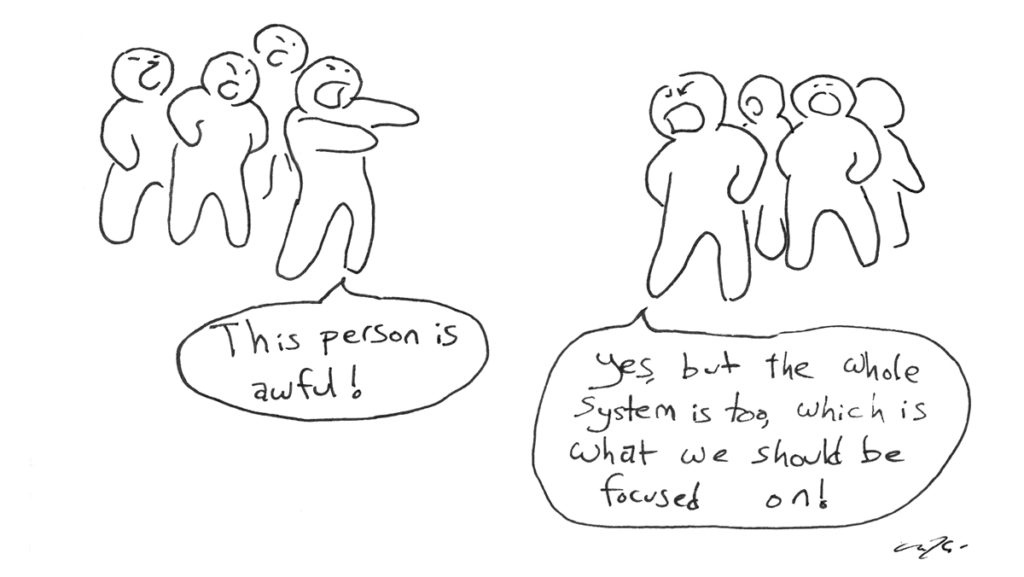Between Dec. 7 and Dec. 8, a video circulated throughout social media of an Ithaca College student saying a racial slur — the N-word. In the video, the student used the slur, implied darker skin tones are not attractive, recognized in the video that people may be offended and proceeded to post the video to a Snapchat story regardless. After a severe negative reaction from students at the college, the college released a statement condemning the racist language and invited the community to attend an open conversation about it Dec. 11. The student who made the video has also since apologized for her insensitivity.
We should acknowledge the video for what it is: a gross display of racism and ignorance. She used that word in an irrevocably intentional way, adding more ugliness to an overall statement that was disseminating anti-black thought. Incidents like this are a reminder that despite our reputation as a liberal and progressive institution, there are many prejudices still held by members of our student body that need to be addressed. Rhetoric like that displayed in the aforementioned video threatens the emotional and overall well-being of students of color on our campus, rhetoric that is unacceptable and has no place in our community. As said in the college’s statement, racist rhetoric — regardless of medium or intent — cannot and should not go unchallenged.
Unsurprisingly, the video has been met with many students criticizing the creator of the video, as well as the college’s response. Some have called for this student’s expulsion. However, this isn’t the approach we should take when dealing with hatred and ignorance. Instead of alienating the student and fighting hate with hate, we need to meet this situation with compassion and an intent to educate. We cannot turn to social annihilation and public shame to solve this problem. We can call this person out, but we need to call them back in, so this student and others can begin to understand why this word has such immense ugliness.
This was also the logic that the administration called for at the Dec. 11 community forum, where students shared their thoughts on the situation. Three administrators of color — Rosanna Ferro, vice president for Student Affairs and Campus Life; La Jerne Cornish, provost and senior vice president for academic affairs; and Sean Eversley Bradwell, director for the Center for Inclusion Diversity Equity and Social Change (IDEAS) — all handled the discussion with grace and complexity, never ignoring or diminishing the pain students were expressing. We need to acknowledge how far this campus has come when dealing with racist incidents. Four years ago, the largest protests this campus has ever seen erupted when former President Tom Rochon’s administration failed to adequately respond to a series of racist events. President Shirley M. Collado’s administration is setting a proper example of how to deal with these incredibly contentious issues with compassion, strength and vulnerability.
The way the college is handling this situation will also prepare students to deal with racism in the real world. You cannot “expel” someone from society if they use the N-word. We need to be prepared to have difficult conversations with our peers so that one day, we can use this experience to have difficult conversations with our co–workers, family and friends about what words are not OK to use.
This incident, while incredibly painful and concerning, is teaching us something. Let’s be bold enough and brave enough to navigate it together and emerge unified rather than divided.














